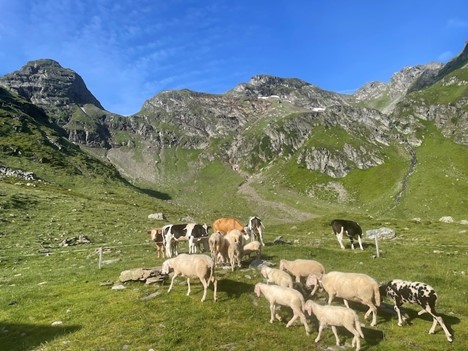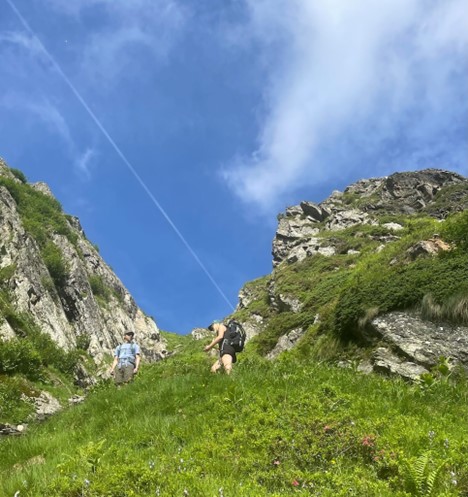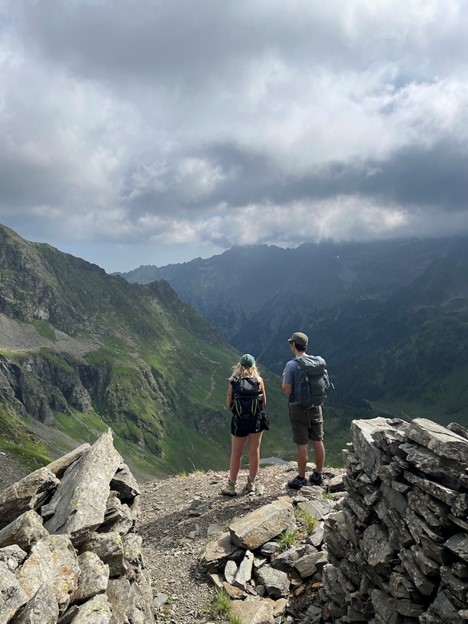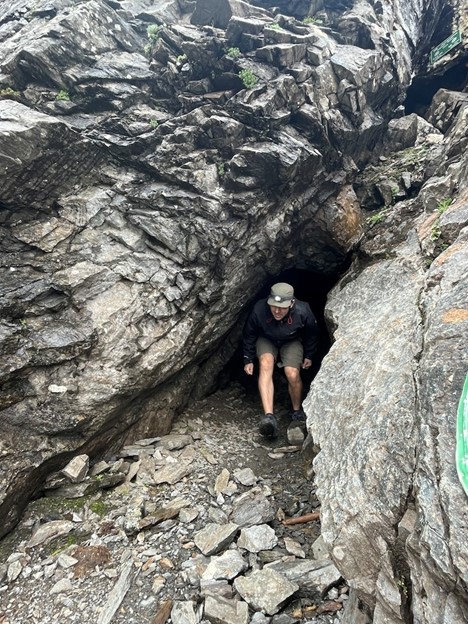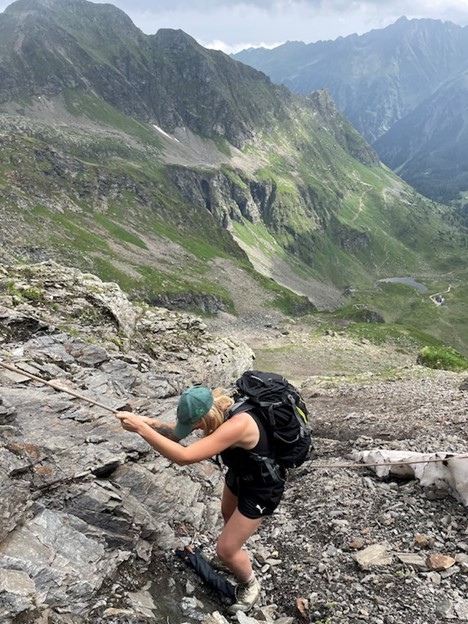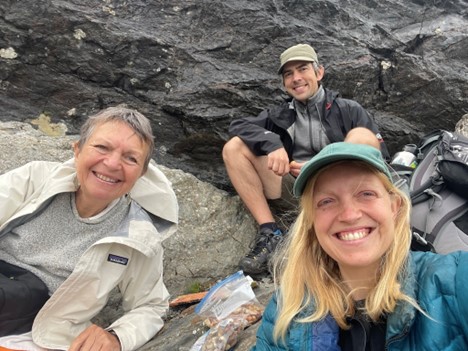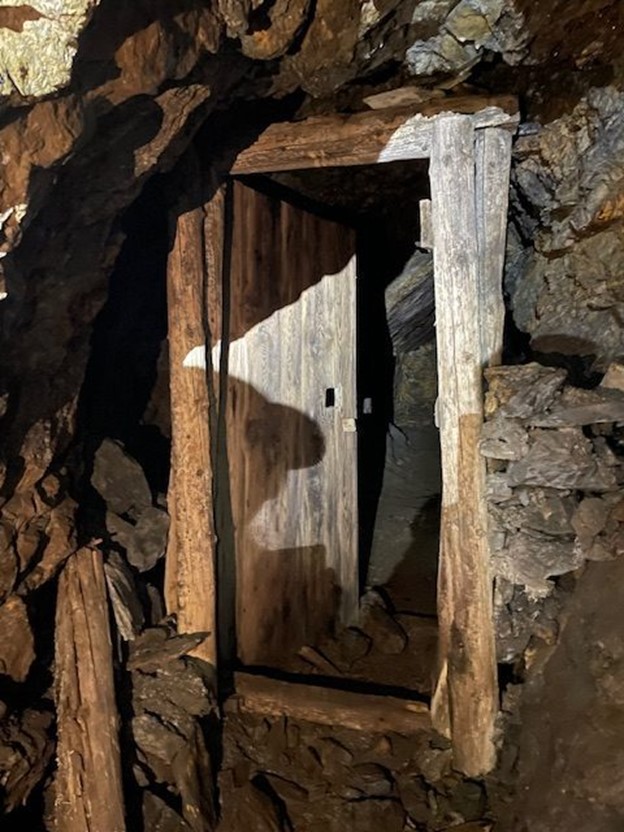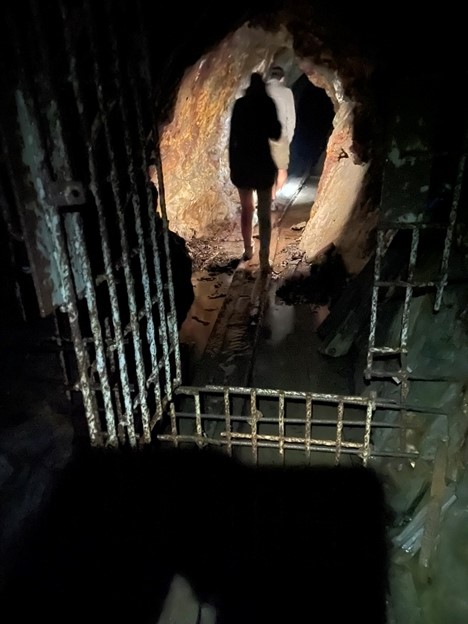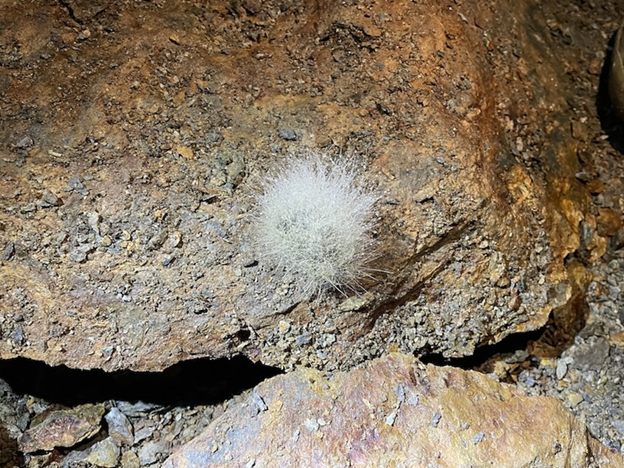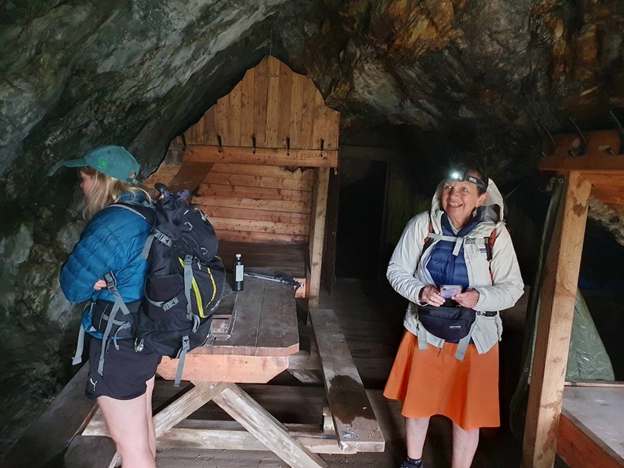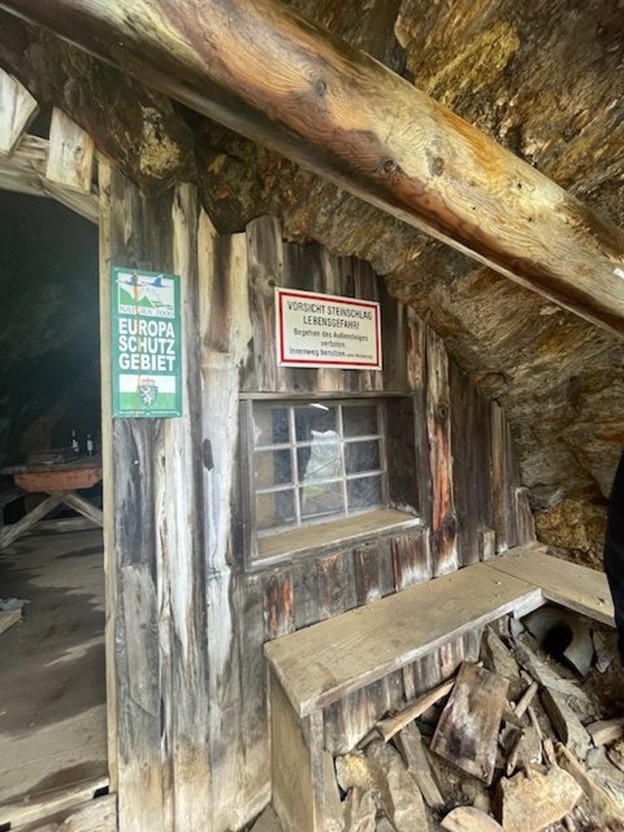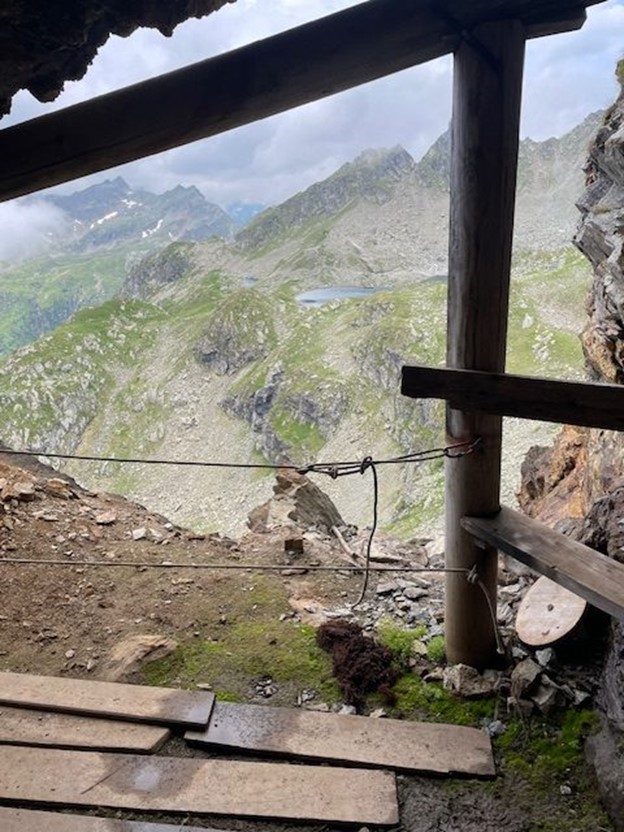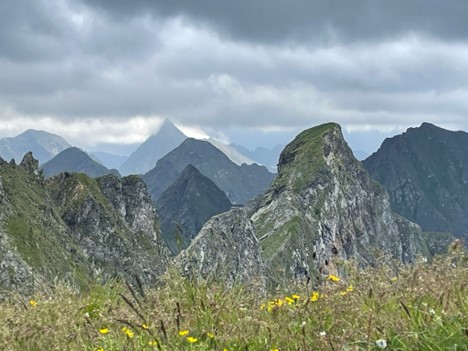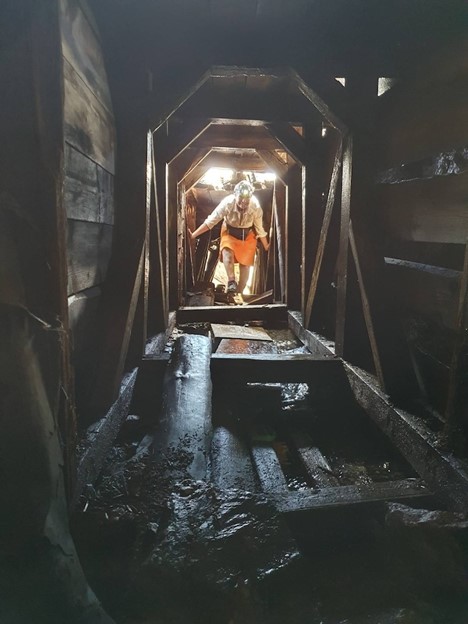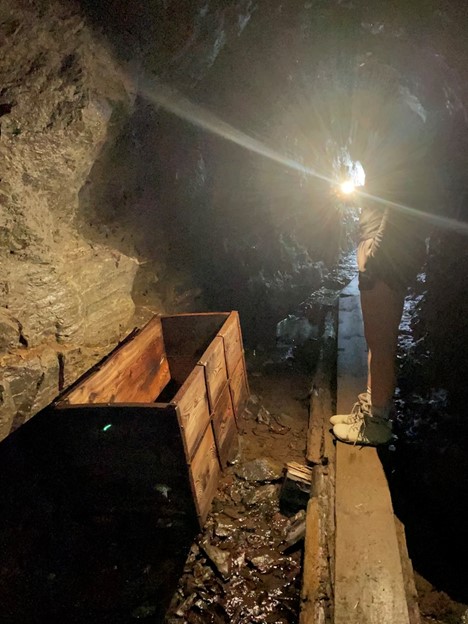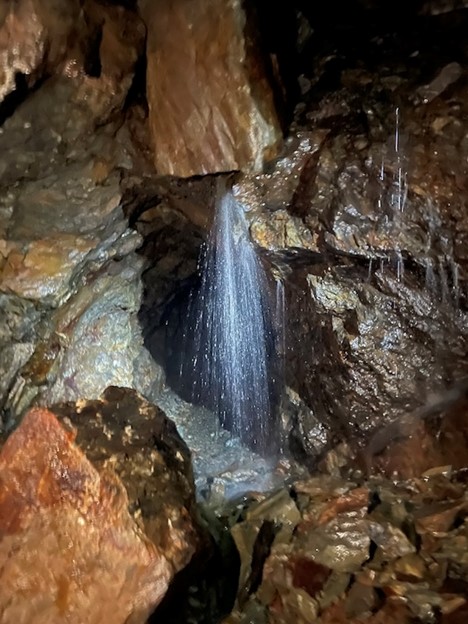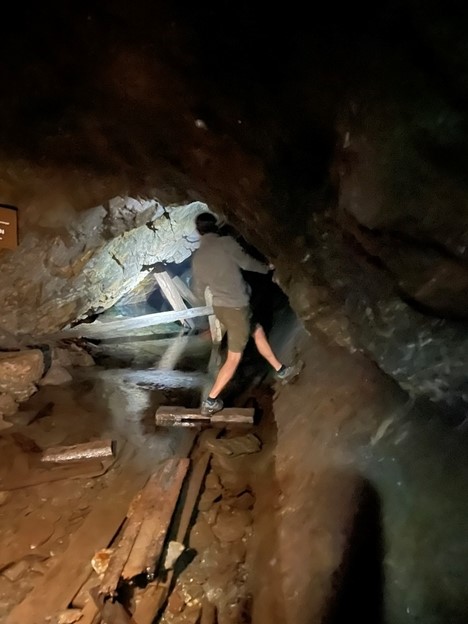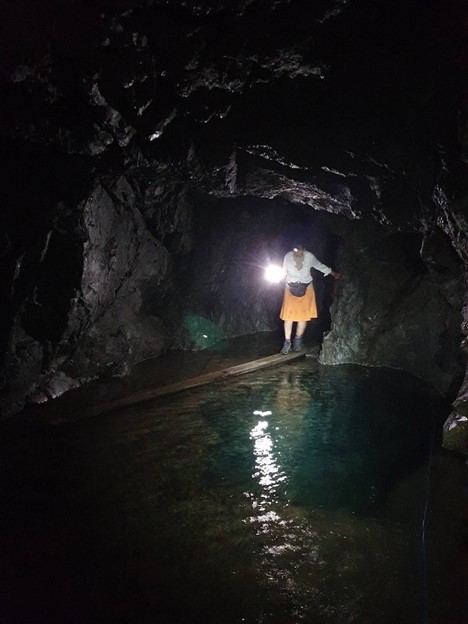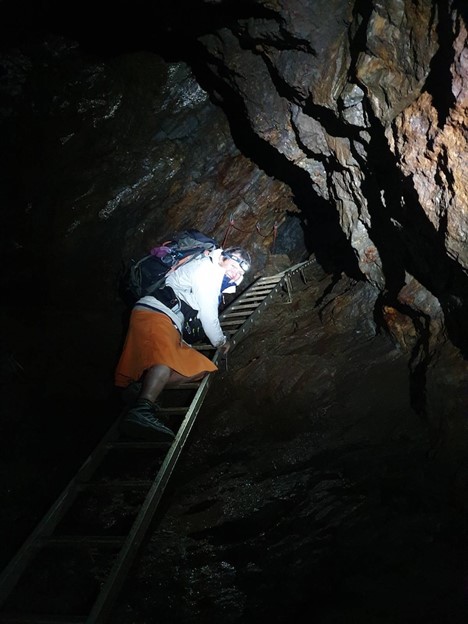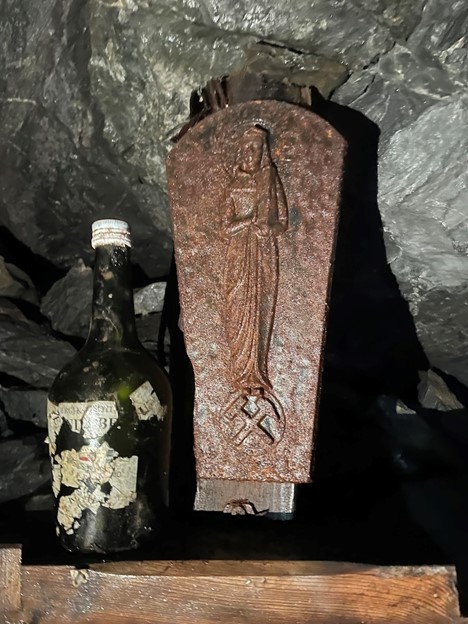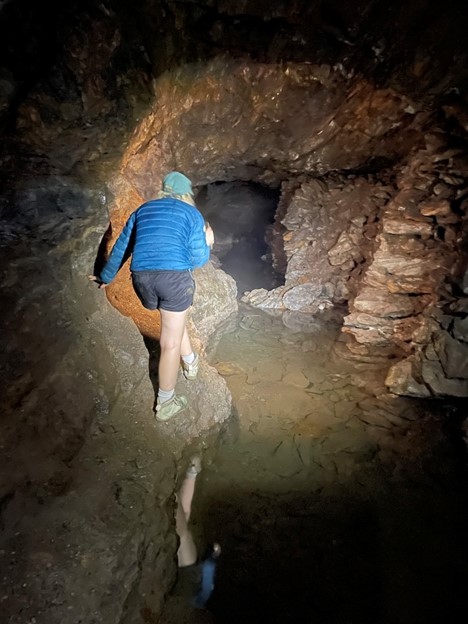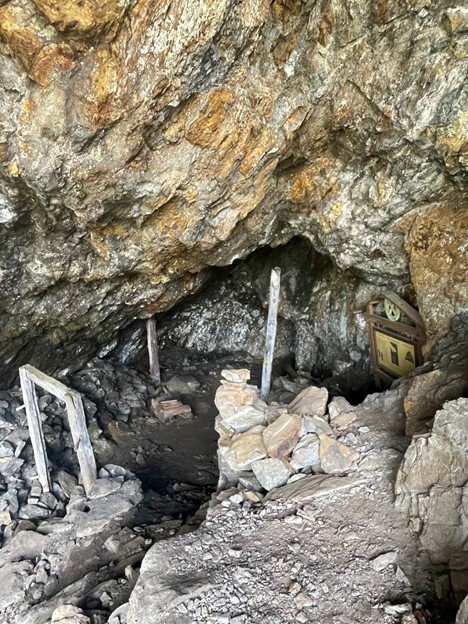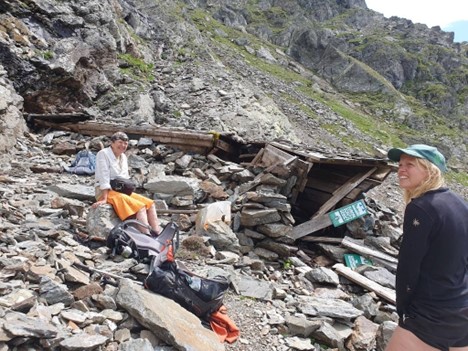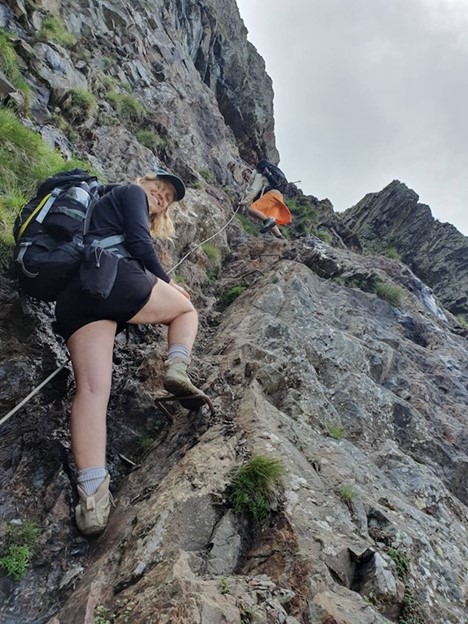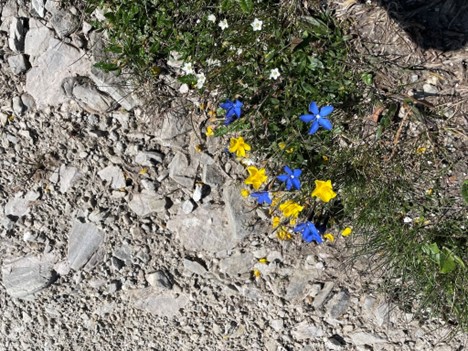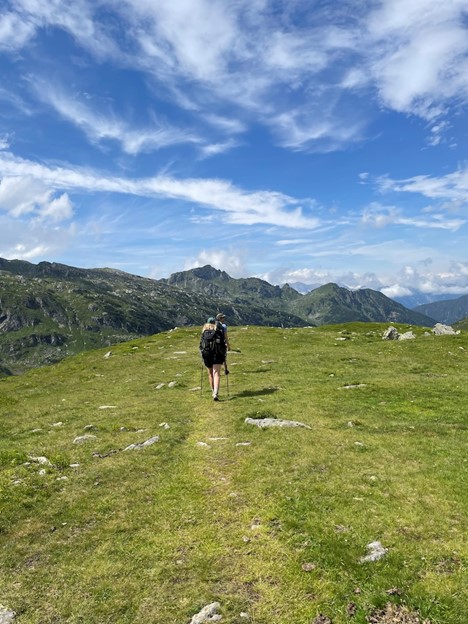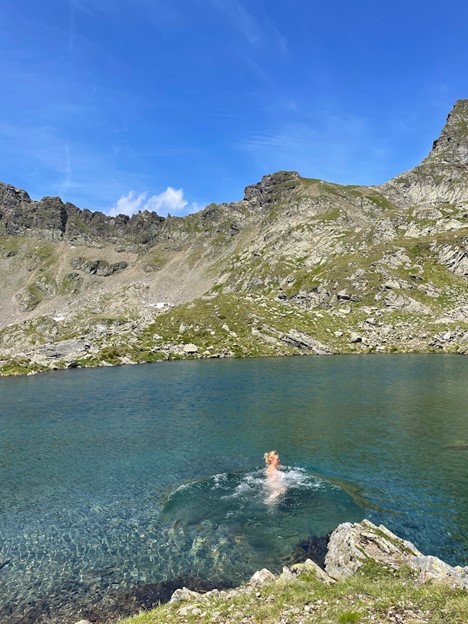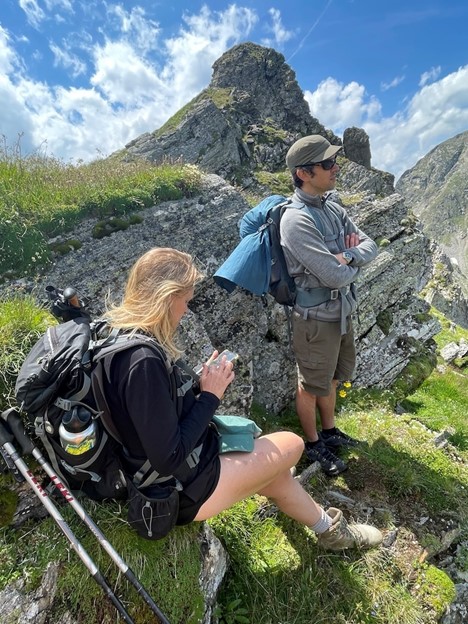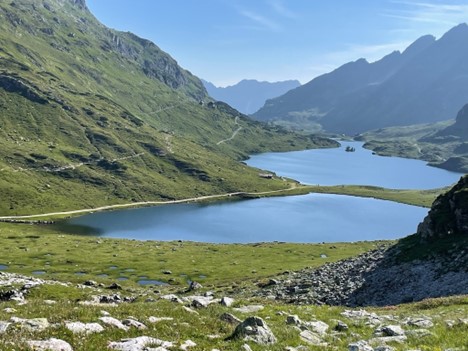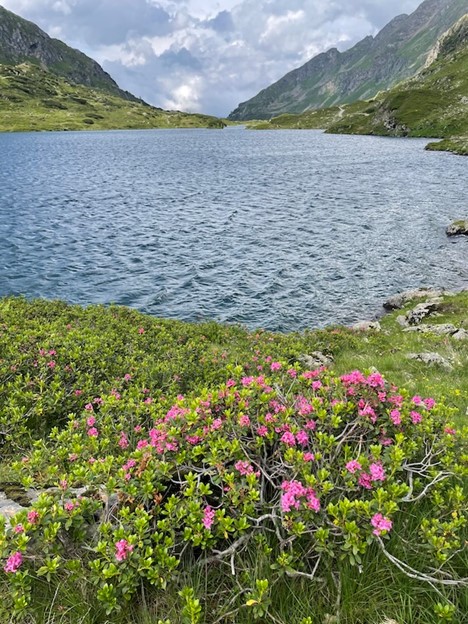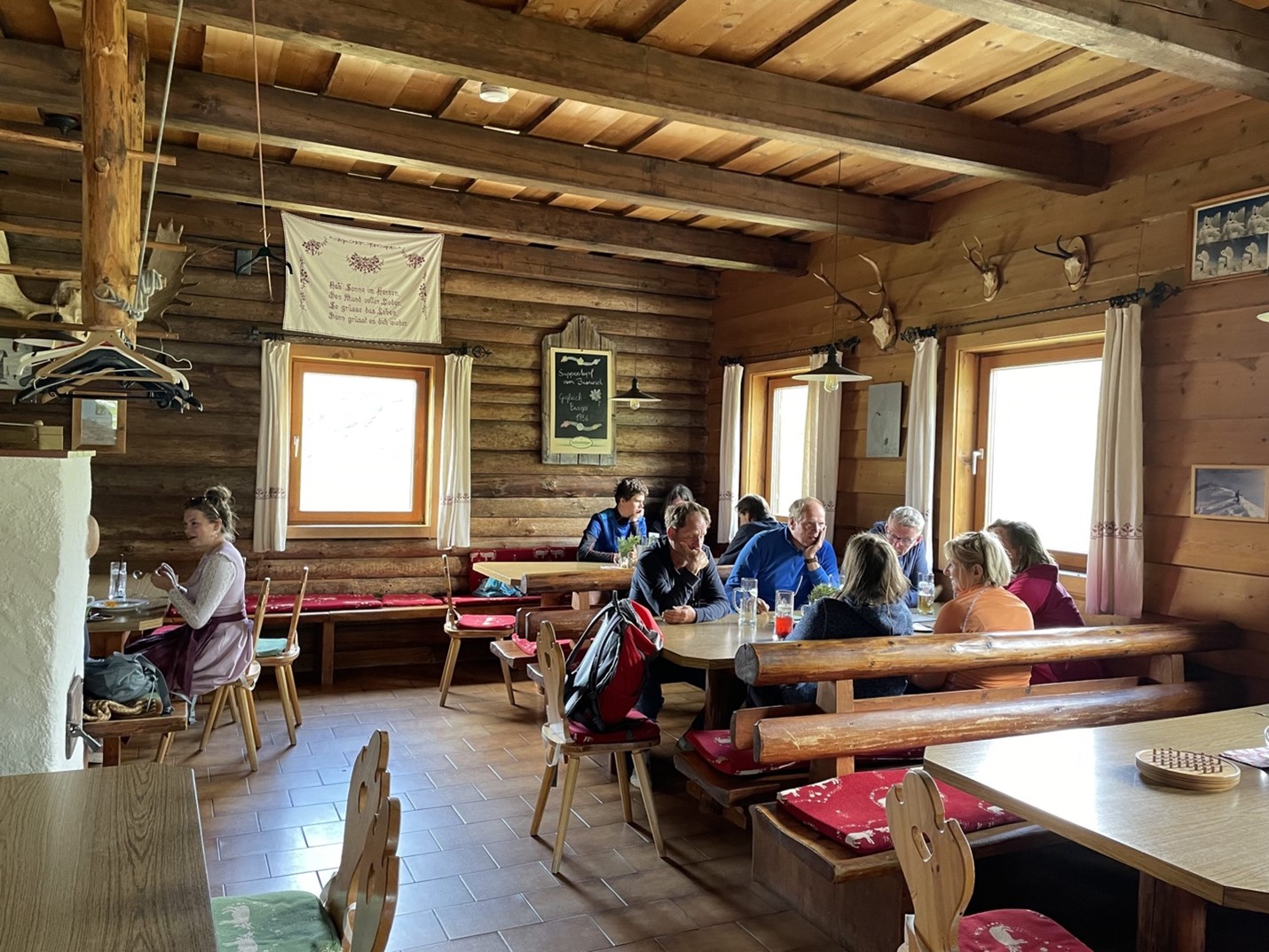Although we had a three-bed cabin for ourselves, I could not sleep all night. Regardless of my lack of sleep, the next day began with a good breakfast, beautiful scenery and an exciting plan. The evening before, we listened to a conversation between the Huettenwirt (cabin owner) and some hikers talking about mining tunnels high up on the mountain. An unmarked path leads to the entrance of a mine, cutting through the mountain and coming out on the other side. I would not have dared to walk to this place on my own. But with Robert and Anna-Sophie as experienced hikers and mountain climbers at my side, I was ready for this adventure.
.
.
..
Sheep in front of the cabin
.
.
.
.
.
A steep path leads up to the Zinkwand. Patiently, Anna-Sophie and Robert waited for me to catch up.
.
.
.
.
.
Like a single tooth
connected with the mountain,
a rock reaches up
.
.
.
.
.
We had to cross a deep, steep snowfield to reach the entrance of the mine. Robert was the first, cutting good footsteps into the icy snow. Careful not to slip, I followed his footsteps.
.
.
.
.
.
Anna-Sophie and Robert in front of the mine entrance admiring the mountain view
.
.
.
.
.
We did not really know if it was safe to go into the mine. Robert had an excellent headlamp and courage to investigate and said that it looked safe.
/
/
/
.
.
We first wanted to eat some snacks we brought before entering the mine. A rope led up to a higher ground where we ate our lunch in the warm sun.
.
.
.
.
.
Three happy climbers
.
.
.
.
.
Unfortunately, my headlamp was nearly out of battery power and only illuminated the immediate steps in front of me. I was not prepared for this cave. Anna-Sophie had forgotten her headlamp, but we could continue with our lights from the cell phones and Robert’s strong head lamp.
.
.
.
.
.
Anna-Sophie and Robert in front of me
.
.
We did not meet anybody else in the cave. The only living thing was a beautiful white ball growing on the rock.
.
.
.
.
.
This white ball was so gracious and courageously growing in total darkness that we were just in awe that it could grow without light.
.
.
.
.
.
Walking through the pitch dark tunnel only illuminated by our lights was exhilarating. Sometimes, we switched out our lights, stopped and just listened. Drops of water occasionally interrupted the silence.
.
.
.
.
.
It was a big surprise to suddenly see light in the distance. We followed the light and came to a cabin previously used by the mine workers. For hundred of years, metals like silver, cobalt, zink and lead were excavated in these mines. They used fire to heat up the rock (later they used explosives) and cooled it by cold water. This loosened the rock. We were also surprised to find a book for guests to sign in and two bottles of Schnaps.
.
.
.
.
.
The cabin had a balcony with a little wooden bench
.
.
.
.
.
The climbing path outside was stopped by a rope. It was forbidden to climb down because of dangerous falling rocks.
.
.
.
.
.
Like on the map, the path leads through the Zinkenwand to the other side, providing gorgeous views.
.
.
.
.
.
A bit father down, we found another entrance to the mine. At the end of this dangerous looking walkway, built to protect from avalanches in wintertime, you see Robert checking out the mine. He told us that it was safe to walk inside. We had also heard the Huettenwirt from last night telling the hikers that he went into the mine. This gave us confidence to try it too.
.
.
.
.
.
Chilly air was blowing out of the wet walkway of the mine.
.
.
.
.
.
We had to walk on wooden boards over the ground covered with mud and water.
.
.
.
.
.
Walking through the mine was like walking in cold rain. Water dropped from above to the ground and everything felt wet and chilly. It was so cold and humid that we could see our breath.
.
.
.
.
.
The water became deeper. Robert and Anna-Sophie could not stop discovering the cave. In the photo above, Robert is balancing on moving wooden board in order to reach a safer spot.
.
.
.
.
.
I followed Robert and Anna-Sophie. There was nothing to hold on to when I balanced on an about 5 m long board. A deep water hole was to the right of me. To the left, the water was about 30 cm deep. My balance is not as good as it used to be and I was a bit scared. I reached the other side safely.
.
.
.
.
.
.
I was glad that I did not lose my balance. Falling into this chilly water would have ended our adventure.
.
.
.
.
.
We arrived at a place with a vertical rock reaching up to higher grounds. An about 10 m high metal ladder not attached to the rock, leads up to higher mines. Robert was the first to climb up and I followed.
.
.
.
.
.
An old statue of St. Barbara, protector of miners
.
.
.
.
.
There was so much to discover. At one point, my hands were so freezing cold and I was afraid that I could not use them anymore to hold on so we left the mine. We were in the mines for three hours.
.
.
.
.
.
At the exit of the mine we found a former blacksmith area. It was easier to make the tools they needed up there at the entrance than to haul them up the steep mountain.
.
.
.
.
.
After coming out of the mine, we had to sit in the sunshine to warm up. In this photo you see the entrance into the mine – not really inviting. We were told that until 2003, a company offered tours. It became unsafe and they stopped. However, they left ropes, ladders and boards for people wanting to discover the mines at their own risk. We were so happy that they did not close the entrance.
A very steep, secured climbing path was leading from the exit of the cave to lower grounds. My hiking skirt was not ideal.
.
.
.
.
Secured climbing path
.
.
.
.
.
High up in the mountains, the colors of the flowers are brilliant. The blue flower is called Enzian (gentian).
.
.
.
.
.
Walking down to our next cabin
.
.
.
.
.
We soon arrived at two small, high altitude lakes.
.
.
.
.
.
Nobody else was around. We jumped into the freezing, clear water to refresh.
.
.
.
.
.
There was hardly any cell phone connection. However, Anna-Sophie, being a mother of a nearly two year old child, checked sometimes her phone to see if everything was okay at home.
.
.
.
.
.
The upper and lower Giglachsee
.
.
.
.
.
Oberer Giglachsee and alpine roses
.
.
.
.
.
Every sleeping place in the Giglachseehuette was booked. Our sleeping place was in small room with a sleeping platform on two levels. About 15 people slept in this room. It only had one window. The air was stale and hot. Nobody could sleep. However, with no sleep, people also did not snore – something positive.
.
.
.

